Last Updated on November 22, 2022
The year is 1896 and The Boston Cooking School is in full swing. Mrs. Fannie Farmer, headmistress for the past six years, is hard at work preparing a new cookbook that would revolutionize the world of cooking. The Boston Cooking School Cookbook would become a common household title in kitchens for many generations to come.
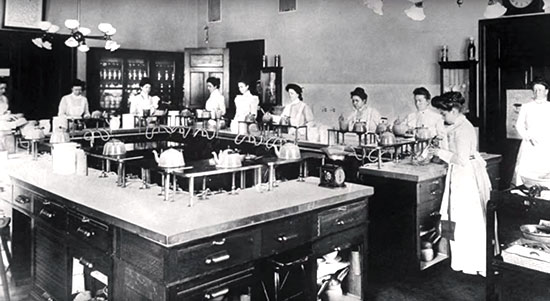
To help keep this site running: Willow and Thatch may receive a commission when you click on any of the links on our site and make a purchase after doing so.
The television show “Fannie’s Last Supper” dives into the history of American cooking and explores how Fannie Farmer forever changed the way people cooked. For two years, Culinary expert Christopher Kimball researched and tested recipes from Farmer’s cookbook.
In this historical cooking documentary, Kimball and his team attempt to recreate an authentic turn-of-the-century 12-course dinner. It’s the kind of show that fans of period dramas and living history shows with Lucy Worsely will want to watch.
And, for those who want to know more after watching, there’s also a book: Fannie’s Last Supper: Re-creating One Amazing Meal from Fannie Farmer’s 1896 Cookbook. Think of it as a culinary thriller.
Below, Bryce from Instagram’s The Victorian Kitchen shares his reflections of the documentary.
We can still feel the influence of Fannie Farmer – the Victorian era’s Julia Child – in the 21st century. Fannie lived in a world where following a recipe wasn’t something an amateur baker could easily do. There was no standard system of measurement that was universal across cookbooks (think cups, tablespoons, etc.) but Fannie’s cookbook lead the way by publishing easy to follow recipes with a reliable system of measurement.
Over the past three-quarters of a century, Fannie’s cookbook has sold more than three million copies and which is currently in its eleventh edition. And in her lifetime, the cookbook was a massive success, hurling Fannie into the limelight, and crowning her cooking royalty.
Ms. Farmer was a chef and domestic science extraordinaire, educator, and expert. Her recipes hold up well even today, and the documentary “Fannie’s Last Supper” highlights this beautifully. Released in 2010, the documentary is about culinary expert Christopher Kimball’s idea to revive a twelve course meal taken directly from the pages of Farmer’s famous cookbook.
Enlisting the help of America’s Test Kitchen chef Erin McMurrer, the idea was not only to test the Victorian era recipes, but also to improve and enhance them if need be. Staying as true as possible to the way Fannie would have cooked, Kimball, McMurrer used the same type of stove used by women in the 1800s.
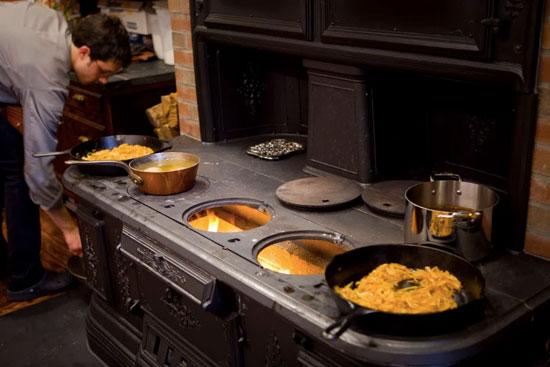
As the documentary details, the hot, grueling and harrowing task of cooking on a wood burning stove takes its toll on a chef. “Fannie’s Last Supper” makes the viewer grateful for how much easier things have become for the modern cook.
“Fannie’s Last Supper” largely focuses on the development of the twelve different dishes themselves, which range from things we still eat today, to the bizarre. It also provides ample enjoyment in showing the chefs navigate the perils of the hot stove, and as they confront strange ingredients. The documentary also provides the right measure of facts regarding Fannie herself, Victorian dining etiquette, and the ever-changing idea of Victorian cuisine.
As the modern chefs make their own meat broths, stocks and gelatins, it quickly becomes apparent how much talent and practice it would’ve taken to be a proficient cook during the era. Prepare to be humbled by the degree of difficulty involved in cooking a simple Victorian era meal: she would have to constantly monitor the firewood that fueled her stove, keep its temperature stable, and know where to position the pots and pans. One wrong step, and the meal could be ruined. It’s the little details like these that make this documentary such an eye-opener.
And there are plenty of arcane bits of information that will excite anyone interested in the history of cooking. Who knew that the texture of gelatin changes depending on the age of the calve’s feet? The chefs’ creativity shines as they prepare various fruit jellies and a mandarin cake: all great beauties. (One of the jelly recipes calls for pouring jelly into an orange peel, creating a jelly orange slice!)
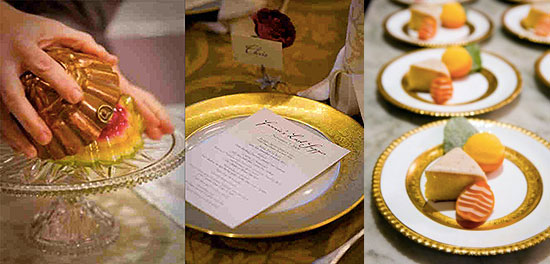
“Fannie’s Last Supper” is also a feast for the imagination, allowing the armchair diner to speculate on the taste of the foreign ingredients and dishes. Victorians prized wild and unique game, so some of the foods included in the preparation of the meal will be unappetizing to the modern sensibility – the chefs themselves even said a few of the ingredients made them queasy.
But turn-of-the-century Fannie would likely have been pleased with the result of the chef’s labors, and the guests who eat the re-created meal appear to enjoy what is on their plates. Still, “Fannie’s Last Supper” doesn’t emphasize the taste and texture of the dishes themselves, which creates an invitation to the daring, modern cook to try out the recipes for herself.
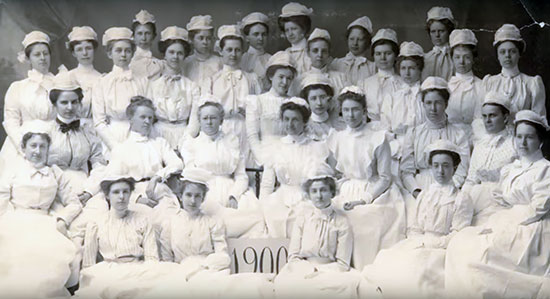
Many of the show’s segments focused on the chefs’ failures. This adds realism to “Fannie’s Last Supper,” but also shines a light on the truth of the matter: Victorian baking for the most part is very hard, hot, and tiring.
This is all the more true for the modern cook or baker making a foray into Victorian recipes. The wording in old cookbooks can be unfamiliar, its directions unspecific, and in the end, the taste of the food may not appeal to the contemporary palate. With old recipes, many times the dish needs to be remade and repeated to be prepared correctly. But for the intrepid cook, “Fannie’s Last Supper” (and its chef’s failures) will provide the necessary encouragement to forge ahead.
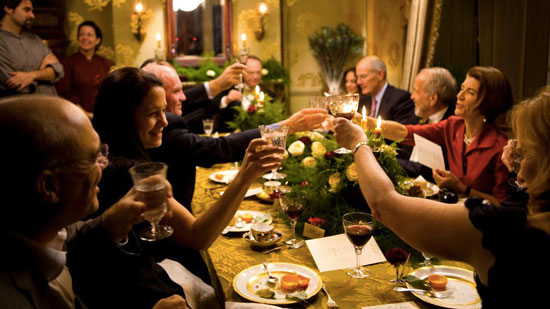
Victorians prized the presentation of the meal as much as its taste. “Fannie’s Last Supper” highlights this, and indeed the finished meal looked stunning sitting on gold-rimmed china, surrounded by roses and a merry group of dinner guests. Like Christopher Kimball, this is likely what Fannie loved about cooking. The idea that yes, cooking is hard work, but the payoff is what makes it special and wonderful.
Fannie and her cookbook became a cultural force not only in the hearts of chefs, but amateur cooks and domestic staff everywhere. The Boston Cooking School Cookbook promised the average American that anyone who knew how to follow direction and measure ingredients could cook, and for that we owe her many thanks. “Fannie’s Last Supper” provides a wonderful journey into her world.
Fannie’s Last Supper is AVAILABLE to STREAM
About the book Fannie’s Last Supper: In the mid-1990s, Chris Kimball moved into an 1859 Victorian townhouse on the South End of Boston and, as he became accustomed to the quirks and peculiarities of the house and neighborhood, he began to wonder what it was like to live and cook in that era. In particular, he became fascinated with Fannie Farmer’s Boston Cooking-School Cook Book. Published in 1896, it was the best-selling cookbook of its age—full of odd, long-forgotten ingredients, fascinating details about how the recipes were concocted, and some truly amazing dishes (as well as some awful ones).
In Fannie’s Last Supper, Kimball describes the experience of re-creating one of Fannie Farmer’s amazing menus: a twelve-course Christmas dinner that she served at the end of the century. Kimball immersed himself in composing twenty different recipes, and his research leads to many hilarious scenes, bizarre tastings, and an incredible armchair experience for any reader interested in food and the Victorian era.
Fannie’s Last Supper includes the dishes from the dinner and revised and updated recipes from The Boston Cooking-School Cook Book. A culinary thriller. it offers a fresh look at something that most of us take for granted—the American table.
The book Fannie’s Last Supper: Re-creating One Amazing Meal from Fannie Farmer’s 1896 Cookbook is available here.
The Boston Cooking School Cookbook is available here.
Bryce is a baker who scours cookbooks from the 19th century to revive, adapt, test out, taste, reinvent and document long forgotten Victorian dessert recipes. He’s inspired by Fannie Farmer, Beatrix Potter, and his grandmother. You’ll find him on The Victorian Kitchen here, on Instagram.
If you enjoyed this post, be sure to see The Period Films List, with British, historical and costume dramas sorted by era. Also see Lucy Worsley’s A Very British Romance.

